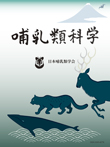62 巻, 2 号
選択された号の論文の17件中1~17を表示しています
- |<
- <
- 1
- >
- >|
フィールド・ノート
-
2022 年 62 巻 2 号 p. 119
発行日: 2022年
公開日: 2022/08/10
PDF形式でダウンロード (4006K)
原著論文
-
2022 年 62 巻 2 号 p. 121-132
発行日: 2022年
公開日: 2022/08/10
PDF形式でダウンロード (1816K) -
2022 年 62 巻 2 号 p. 133-139
発行日: 2022年
公開日: 2022/08/10
PDF形式でダウンロード (1026K) -
2022 年 62 巻 2 号 p. 141-149
発行日: 2022年
公開日: 2022/08/10
PDF形式でダウンロード (1575K) -
2022 年 62 巻 2 号 p. 151-160
発行日: 2022年
公開日: 2022/08/10
PDF形式でダウンロード (1217K) -
2022 年 62 巻 2 号 p. 161-187
発行日: 2022年
公開日: 2022/08/10
PDF形式でダウンロード (3931K) -
2022 年 62 巻 2 号 p. 189-201
発行日: 2022年
公開日: 2022/08/10
PDF形式でダウンロード (2994K) -
2022 年 62 巻 2 号 p. 203-214
発行日: 2022年
公開日: 2022/08/10
PDF形式でダウンロード (13610K) -
2022 年 62 巻 2 号 p. 215-223
発行日: 2022年
公開日: 2022/08/10
PDF形式でダウンロード (2346K)
短報
-
2022 年 62 巻 2 号 p. 225-231
発行日: 2022年
公開日: 2022/08/10
PDF形式でダウンロード (1637K) -
2022 年 62 巻 2 号 p. 233-237
発行日: 2022年
公開日: 2022/08/10
PDF形式でダウンロード (914K) -
2022 年 62 巻 2 号 p. 239-245
発行日: 2022年
公開日: 2022/08/10
PDF形式でダウンロード (4080K)
報告
-
2022 年 62 巻 2 号 p. 247-255
発行日: 2022年
公開日: 2022/08/10
PDF形式でダウンロード (3341K) -
2022 年 62 巻 2 号 p. 257-263
発行日: 2022年
公開日: 2022/08/10
PDF形式でダウンロード (7755K) -
2022 年 62 巻 2 号 p. 265-277
発行日: 2022年
公開日: 2022/08/10
PDF形式でダウンロード (4107K)
フォーラム
-
2022 年 62 巻 2 号 p. 279-283
発行日: 2022年
公開日: 2022/08/10
PDF形式でダウンロード (883K)
書評
-
2022 年 62 巻 2 号 p. 285-289
発行日: 2022年
公開日: 2022/08/10
PDF形式でダウンロード (1026K)
- |<
- <
- 1
- >
- >|
